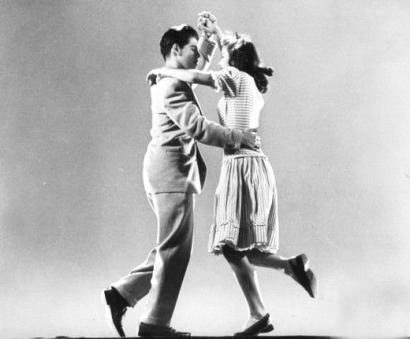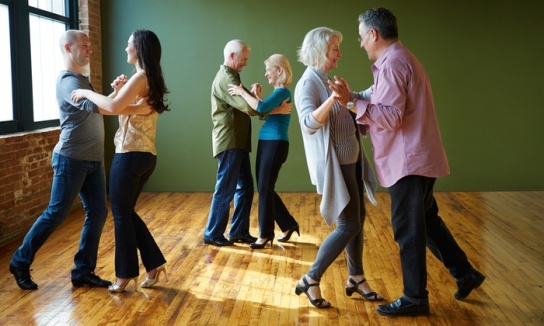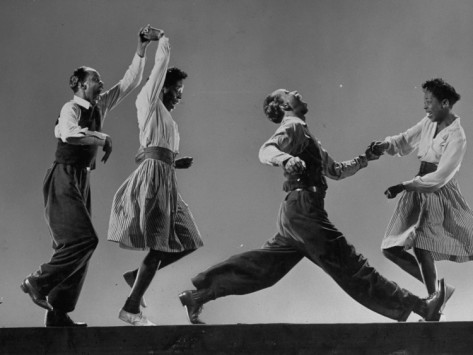I think I'm finally getting the hang of this...this dancing thing, ah, dancing with emotions that is.
What I mean by this is I figured out that I need to take care of the right brain before I move in with the left brain.
Right brain processing tends to deal with the emotions and the "felt" world, while left brain processing tends to deal with language and the logical world. Not to oversimplify the functioning of the brain, but I realize that good counseling, good relationships and good interpersonal outcomes all have to deal with learning how to do the right-left-right-left "dance," so that at the proper time, and with the correct steps being taken, more than likely something positive, healing and curative could occur.

I wish I'd figured these emotional dance steps out a lot sooner in my life. If I had, I imagine I could have avoided a lot of unnecessary conflict and fights with others, especially with those who I love. I wouldn't have stepped on or over emotions, but on the other hand, I think this knowledge would have helped me to understand how to better deal with my own hurt, pain and confusion as well as how to constructively deal with the similar emotions that my partner, children, family members or others were feeling as well. Why didn't I learn these simple dance steps sooner? Uggghhh! Thankfully, there's no better time than now to learn how to dance with emotions though! And today I want to learn these steps!
What I'm suggesting is not new, nor spectacular. And if the right brain - left brain, right brain - left brain dance steps are implemented, you too could be creating some positive moments with your loved ones as well. Here's how:
When people are emotionally hurt, misunderstood, fearful, confused or ashamed, then their Right Brain needs to be "Consoled" before the left Brain brings in the "Counsel." Think about it. If its raining and thundering outside and your frightened 4 year old child comes running into your room in the middle of the night, which action would be the best for your to deliver: an accepting, protective and reassuring kiss and embrace (for their right brain) or a lecture about how the weather radar indicates the storm is about to pass and there's nothing for them to be afraid about (left brain)?
As you probably guessed, the first option will yield the right outcome; congratulate yourself because when you "lead with the right," you're taking and making the right steps in the dance. After you have created some calm in the brain, physiology and body of your 4 year old, then you could lead with your left brain, by communicating reassuring messages that they will be ok (as you're walking them to their room) and that you'll be there if they need you. Here's the practical steps: Consoling then Counsel. Right Brain then Left Brain. Console then Counsel.
Now, could you imagine if the 4, 8, 10 or 12 year old in the Adult version of you were terrified, shamed or devastated, and received "counsel" or unwanted words from your spouse when you really needed someone to console you in your pain? Leading with the "logical left," albeit with good intentions, may not help the "troubled and vulnerable child" within you to feel better. Take it from me, I know better today. What follows are some "right - left - right - left" brain suggestions for you to consider in your endeavor to learn how to dance with emotions:

Right Brain suggestions (Demonstrate the "Curative C's"):
- Curiously consider how you could be Consoling in a time that needs consolation.
- Become Curious (and not furious) by asking questions that deepen your understanding.
- Try to demonstrate Compassion, which leads you to be kind to the inside of another.
- Be Considerate of thoughts and emotions when they come up and are expressed to you.
- Look for Creative ways to non-verbally help someone to feel calm: a touch on the shoulder, holding hands and eye contact establish the Connection that helps.
Left Brain suggestions (Speak with the "Empowering E's"):
- Your role is to Edify; What does the person need to hear from you at this time?
- Use words that Empower the person you are with. The validation means a lot!
- Make sure your words are Empathetic; these words continue the consolation.
- If its "Information" that you need to pass along, be brief with your words!
- Seal the deal with an Embrace; wait isn't that a Right Brain response? Yep, now you're getting it!

Like me, I have an idea that if you learn these steps, then you'll be progressing and producing some pleasant and rewarding outcomes in your ability to dance with emotions. I wish you the best in this worthwhile endeavor to learn these steps! Enjoy your work and make sure you click here to view the sort video related to the picture below!

Thanks for visiting and please visit the other blogs written by Dr Ken McGill: Daily Bread for Life and “3 – 2 – 5 – 4 – 24″ for additional information that could be helpful. I welcome your comments below or via email and your favorites, your retweets and your “+1’s” if you have a brief moment and find the information helpful, please pass along a rating or review of my book “Daily Bread for Life, Vol. 1 in the Amazon bookstore. Again, it is my desire to provide the very best info for your consideration.

No comments:
Post a Comment